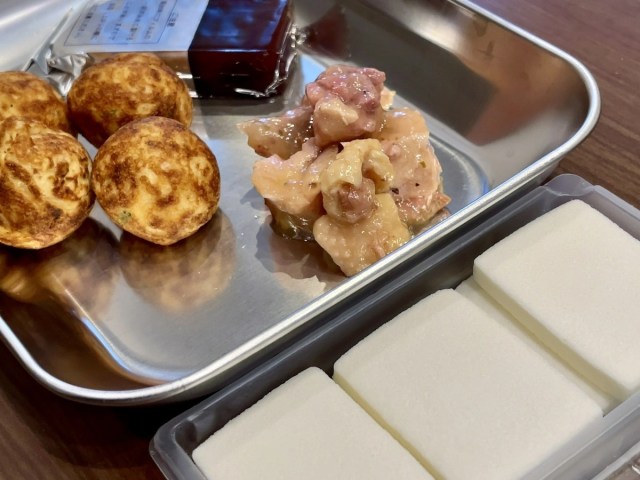
Take your taste buds on an intergalactic trip with these space-friendly foods!
October 4th marked the start of World Space Week, which commemorates the launch of the first human-made artificial Earth satellite, Sputnik 1. And while Sputnik was a Russian creation, these days astronauts from all over make journeys into space, including many Japanese astronauts.
Spending time floating in a zero-gravity environment miles above the planet sounds cool enough, but there are sure to be a lot of things astronauts miss about being on Earth, like, in particular, food from their home country. Understandably, space-safe food has a number of limitations and restrictions, since it needs to stay preserved on its way out into orbit and also be in a form that allows it to be safely eaten in the precision environment of a spacecraft or station. In keeping with such restrictions, space food consists mostly of freeze-dried products, so it might be hard to imagine a situation where you’d enjoy food designed to be eaten in outer space.
But we recently got our hands on some Japanese space food, and we have to say we were pretty keen to try it out.

As of 2022, there are currently 50 products that the Japan Aerospace Exploration Agency (JAXA) have certified as ‘Japanese Space Food’. Some of these products are available for the public to buy and try, like this space rice ball or a can of space mackerel. This time, we decided to try out four other products marketed as ‘space friendly’ and see how they tasted.
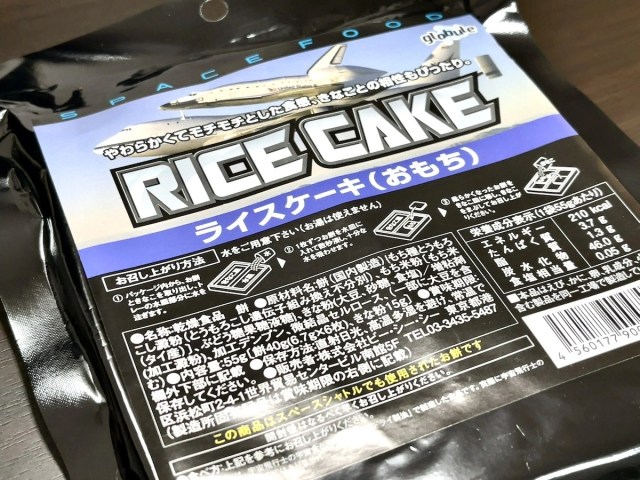
First off, we decided to try out some space mochi, rendered as ‘rice cake’ on the packaging.
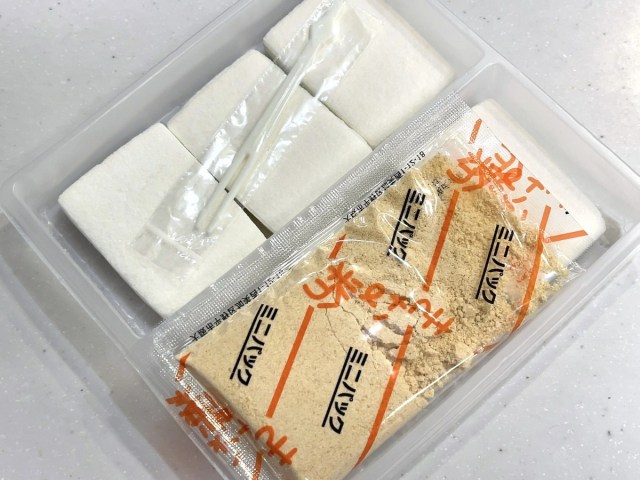
The package included six thin slices of mochi rice cake, some kinako (soybean flour) and a tray to put water in. It also came with a fork to eat your mochi with.

In its current state it looks like some polystyrene packaging, and not particularly appetising.
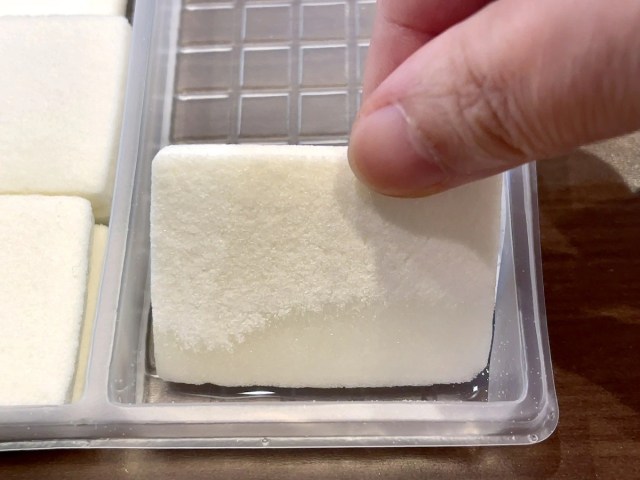
But once the mochi square is dipped into some water on the tray, it absorbs the water and turns into…
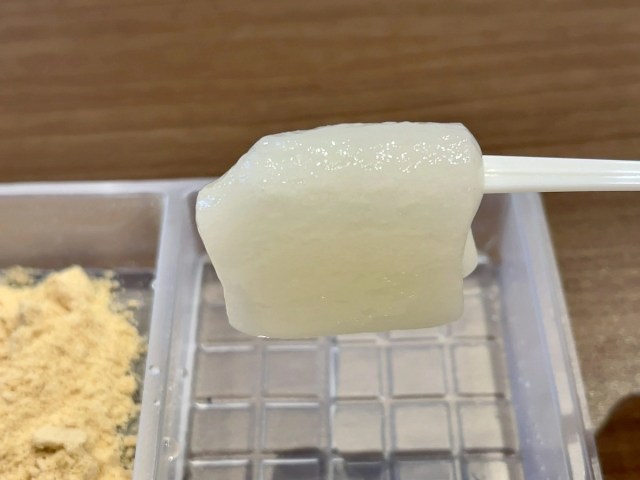
… a pretty normal looking piece of mochi! It’s the perfect mix of chewy and sticky; in fact it’s so sticky that if you put several pieces together, they become one. And yet, it isn’t too soggy. It’s just like real mochi!
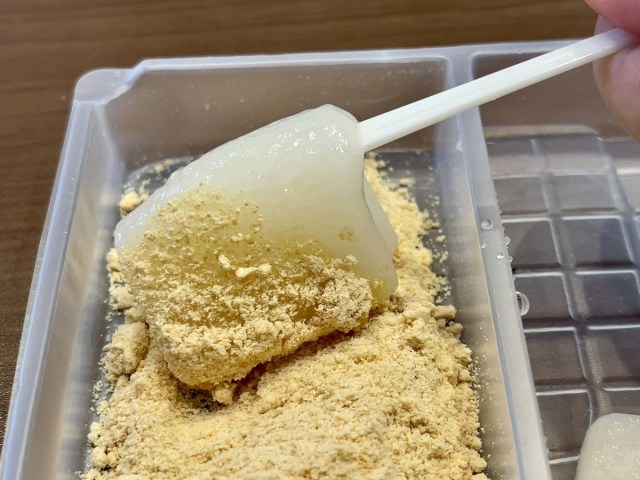
It was just as good as any mochi you’d buy in a supermarket, and our taste tester Saya Togashi would even consider keeping some at home for snacks.
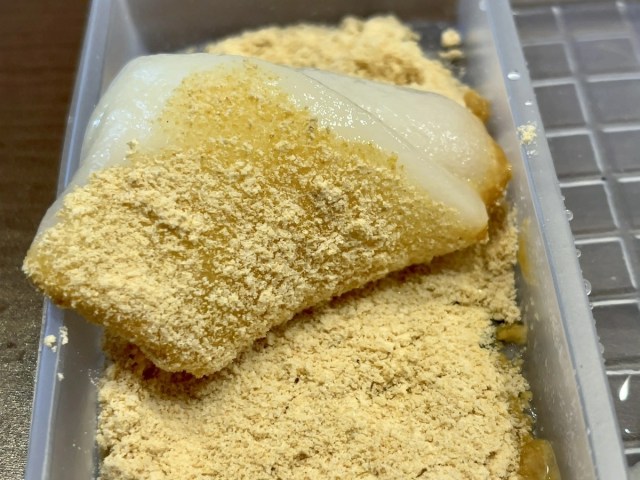
But while this tasted like real mochi, and any Japanese astronauts on the International Space Station would never get homesick for Japanese food if they had this, Saya couldn’t help but spot some problems. Water has to be used differently in space because of the lack of gravity, so it would be pretty tricky to just pour water straight onto the mochi tray.
Also, the kinako flour would pose a problem in space, as any flour that floated away could clog air vents, contaminate equipment or get stuck in an astronaut’s eyes, mouth or nose. Saya assumed that the astronauts in space would prepare this in a different way to avoid any kinako flour mishaps from happening.
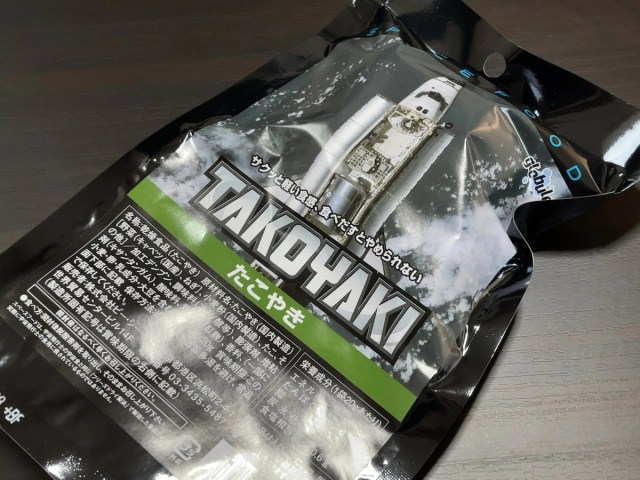
But still, it was a pretty tasty product, and Saya was looking forward to her next space meal, which was one of Osaka’s favorite regional specialties, takoyaki.
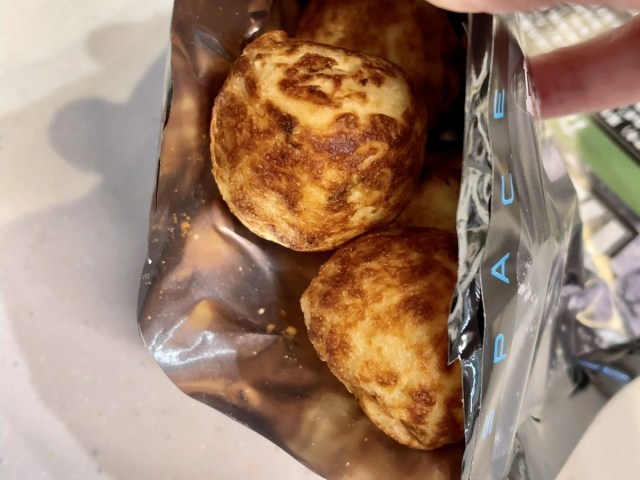
The packaging has a disclaimer that this takoyaki isn’t actually space-certified, but is made using the same production method as the takoyaki that are actually sent to space.
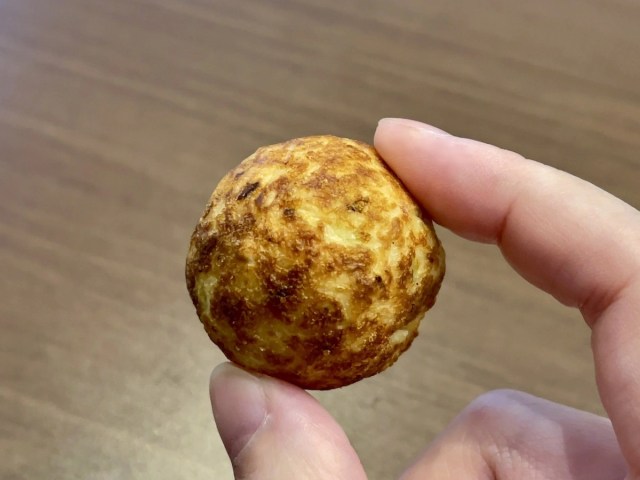
At a first glance, this didn’t really strike Saya as a real takoyaki ball; rather, some sort of takoyaki-flavoured snack puff.

But after taking a bite, Saya could taste the flavours like octopus, spring onion, ginger, and so on that make up a real takoyaki ball. This wasn’t just a takoyaki flavoured snack — this was a real takoyaki!
The texture was slightly different to a real takoyaki ball, though. It was freeze-dried, which meant it was more crunchier, but it was very satisfying.
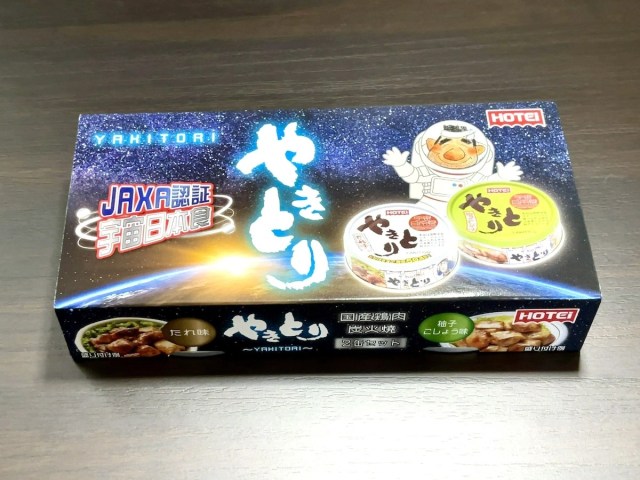
Next up Saya tried some cans of yakitori, which are eaten in space and certified by JAXA. The cans come in two flavours — yuzu kosho (a spicy citrus flavour) and barbecue sauce. Both cans can be eaten as is, or heated up (which in space is done using an onboard food warmer).

The can is easily opened with a pull tab, and the second it’s opened you’re immediately met with a pleasant aroma.
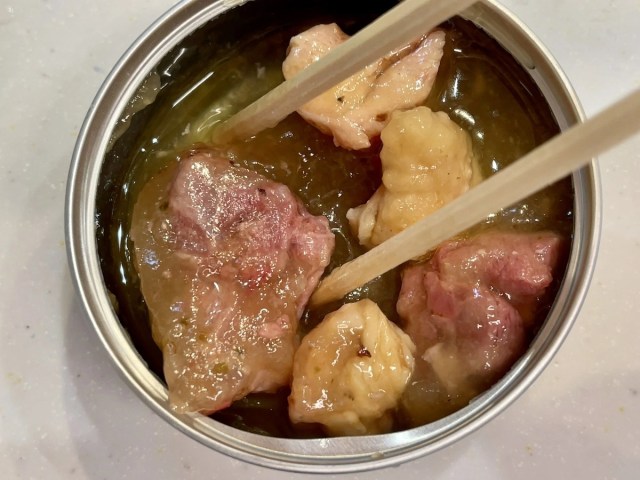
Sure, the bite-sized pieces of chicken in jelly may not look the most visually appealing, but they were surprisingly tasty. The jellied portion has a strong citrus-y flavour and it tastes good even when it’s chilled!
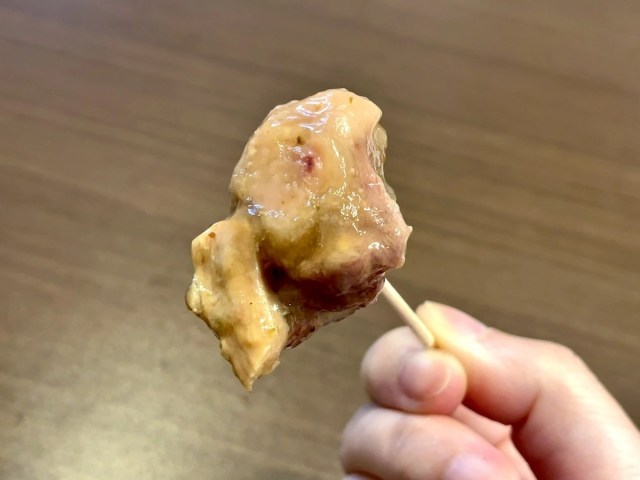
The chicken had a slightly chewy consistency, which makes sense, as in space it’s more difficult to taste flavours and textures, so food with thicker textures with richer flavours are common.

Last on our list of space foods to try was a packet of yokan, a Japanese dessert made from red bean paste, agar and sugar, with chunks of chestnut spread throughout. Yokan may just be the perfect treat to take with you into space — it doesn’t need to be kept in a refrigerator, it doesn’t need any water and it’s satisfyingly filling. Also, it’s tasty and sweet, so it’s an ideal space food!

The packaging was identical to what gets sent to space for astronauts to enjoy, designed so it won’t accidentally burst open in the space station before astronauts open it using scissors.
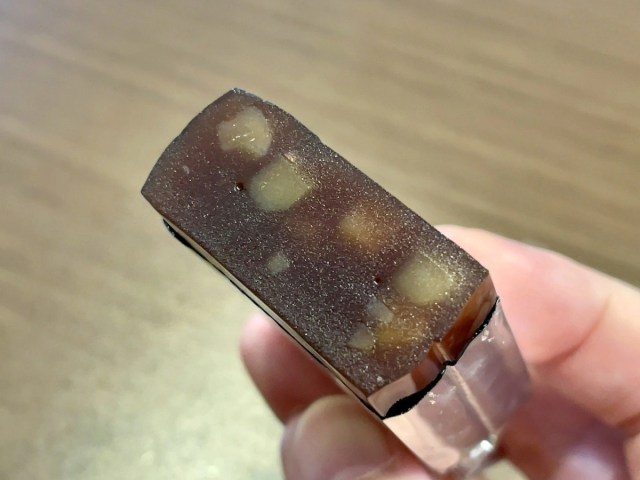
The yokan was identical to a regular yokan you’d find in a supermarket — there was nothing particularly ‘not of this earth’ about how it looked.

In summary, all of these space foods were much tastier than expected. Saya had often imagined the worst thing about being stuck in space would be the lack of any comfort foods from home, but every single one of the products she tried were absolutely delicious, and she particularly liked the mochi.
The products in our space meal are available from JAXA-related facilities and science museums across Japan, as well as online here. If you fancy taking your taste buds on a trip to outer space, give this space food a try.
Related: Space Centre Museum Shop
Photos ©SoraNews24
● Want to hear about SoraNews24’s latest articles as soon as they’re published? Follow us on Facebook and Twitter!

No hay comentarios:
Publicar un comentario